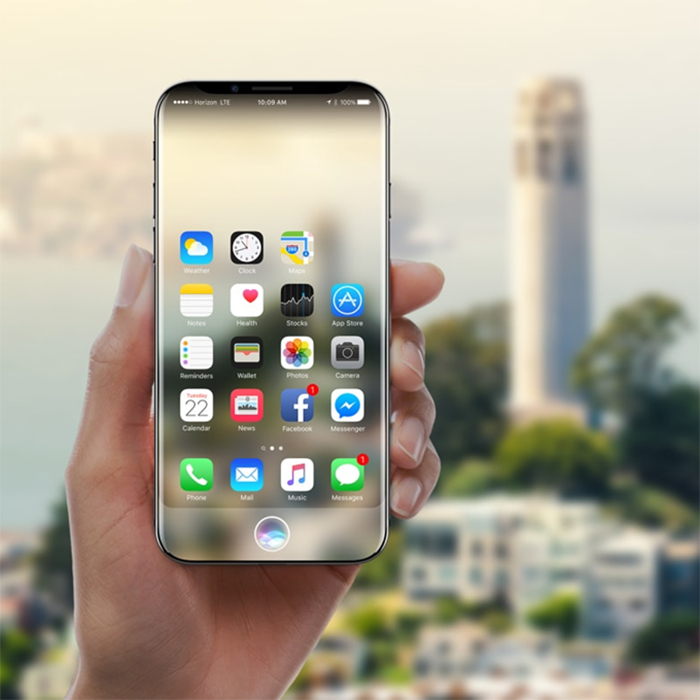Introduction to Quantum Dot Technology
Quantum dot technology is a revolutionary advancement in display technology that leverages the unique properties of semiconductor nanocrystals, known as quantum dots, to deliver exceptional image quality. These tiny particles, typically just a few nanometers in diameter, possess the remarkable ability to emit light of specific colors when excited by an external light source.
The ability of quantum dots to emit light of specific colors is directly related to their size. Smaller quantum dots emit bluer light, while larger ones emit redder light. This size-dependent color emission, known as quantum confinement, allows for precise control over the color spectrum produced by quantum dots.
Advantages of Quantum Dot Displays
Quantum dot displays offer a significant leap forward in display technology, surpassing the limitations of traditional LCD and OLED displays in terms of color accuracy, brightness, and energy efficiency.
Color Accuracy
Quantum dots can achieve a wider color gamut than traditional LCD displays, which rely on color filters to produce different colors. This wider color gamut translates to more vibrant and accurate colors, bringing images to life with greater realism.
Brightness
Quantum dot displays are capable of producing significantly higher brightness levels than traditional LCD displays. This is due to the high efficiency of quantum dots in converting light into visible wavelengths. Higher brightness levels enhance the viewing experience, especially in bright environments.
Energy Efficiency
Quantum dot displays are more energy-efficient than traditional LCD displays. This is because quantum dots can convert a higher percentage of the incoming light into visible light, reducing energy waste.
Historical Overview of Quantum Dot Technology
The concept of quantum dots was first proposed in the 1980s, and their potential for display applications was recognized in the early 2000s. Early quantum dot displays suffered from limited stability and efficiency, but significant advancements in materials science and manufacturing processes have overcome these challenges.
In 2015, Samsung introduced the first commercially available quantum dot displays, marking a major milestone in the adoption of this technology in consumer electronics. Since then, quantum dot displays have gained widespread popularity, with major manufacturers such as LG, Sony, and TCL incorporating this technology into their high-end TV models.
Applications in Display Technology
Quantum dot technology has found widespread applications in various display technologies, including:
Quantum Dot LCD (QLED) Displays
QLED displays are LCD displays that utilize quantum dots to enhance color performance. In QLED displays, quantum dots are placed between the backlight and the LCD panel. The backlight illuminates the quantum dots, which then emit specific colors that are used to create the final image.
Quantum Dot OLED (QD-OLED) Displays
QD-OLED displays combine the benefits of OLED technology with the superior color performance of quantum dots. In QD-OLED displays, quantum dots are used as color filters in front of the OLED panel, enhancing color accuracy and brightness.
Quantum Dot Micro-LED Displays
Micro-LED displays are a new generation of display technology that uses tiny LEDs, each capable of emitting light independently. Quantum dots can be integrated into micro-LED displays to enhance color performance and efficiency.
Quantum Dots in iPhone Displays
Quantum dots (QDs) are semiconductor nanocrystals that have the potential to revolutionize iPhone displays. Their ability to emit specific colors when excited by light makes them ideal for creating vibrant and accurate colors.
Potential Impact on iPhone Displays
Quantum dots could significantly enhance iPhone displays, aligning with Apple’s commitment to design and performance excellence. The integration of QD technology could offer several benefits:
- Enhanced Color Gamut: QDs offer a wider color gamut than traditional LCDs, resulting in more vivid and accurate colors. This means users can experience richer and more realistic images, videos, and games.
- Improved Contrast Ratios: QDs can achieve higher contrast ratios, leading to deeper blacks and brighter whites. This results in a more immersive viewing experience, particularly in dimly lit environments.
- Reduced Power Consumption: QDs are more energy-efficient than traditional LCD backlights, potentially extending battery life on iPhones. This aligns with Apple’s focus on optimizing energy consumption.
Technical Challenges and Limitations
Integrating quantum dot technology into existing iPhone display structures presents several technical challenges:
- Stability and Durability: QDs are susceptible to degradation from environmental factors such as heat and humidity. Ensuring their long-term stability and durability within the iPhone’s design is crucial.
- Manufacturing Complexity: The production of QDs requires precise control over their size and composition, adding complexity to the manufacturing process. Apple’s stringent quality control standards need to be maintained.
- Cost: Quantum dot technology is currently more expensive than traditional LCD technology. Apple needs to balance the cost of implementing QDs with the potential benefits they offer.
Future Trends and Possibilities: Future Iphone Displays Could Feature Quantum Dot Technology
The integration of quantum dot technology in iPhone displays marks a significant step in display innovation. However, this is just the beginning. The future holds exciting possibilities for quantum dot technology, with advancements anticipated in various aspects.
Advancements in Materials and Manufacturing
The development of quantum dot technology is an ongoing process, with continuous research and development efforts focused on improving its performance and efficiency. Advancements in materials and manufacturing processes are expected to lead to even brighter, more vibrant, and energy-efficient displays.
- Improved Quantum Dot Materials: Researchers are exploring new materials for quantum dots, aiming to enhance their color purity, brightness, and longevity. This includes developing quantum dots with wider color gamuts, enabling more accurate and realistic color reproduction. For instance, researchers at the University of California, Berkeley, have developed a new type of quantum dot material that can emit a wider range of colors, leading to more vibrant and realistic displays.
- Advanced Manufacturing Techniques: Advancements in manufacturing processes are crucial for scaling up quantum dot production and ensuring consistency. This includes developing more efficient and cost-effective methods for synthesizing and integrating quantum dots into display panels. For example, companies like Samsung have invested heavily in developing advanced manufacturing techniques for quantum dot displays, enabling them to produce large quantities of high-quality panels.
Integration with Emerging Display Technologies
Quantum dot technology can be seamlessly integrated with other emerging display technologies, further enhancing the visual experience and pushing the boundaries of display capabilities.
- Mini-LED Backlighting: Combining quantum dots with mini-LED backlighting offers a compelling synergy. Mini-LED backlighting provides localized dimming zones, enabling greater contrast and deeper blacks. Quantum dots, on the other hand, enhance color accuracy and vibrancy. This combination results in displays with exceptional picture quality and immersive viewing experiences. For example, Apple’s latest iPad Pro models utilize mini-LED backlighting with quantum dots, delivering a stunning visual experience.
- Micro-LED Displays: The integration of quantum dots with micro-LED displays holds immense potential for the future of display technology. Micro-LEDs offer superior brightness, contrast, and energy efficiency compared to traditional LEDs. Quantum dots can further enhance color accuracy and vibrancy, leading to displays with exceptional picture quality and longevity. While micro-LED technology is still in its early stages, it has the potential to revolutionize the display industry, and quantum dots are poised to play a significant role in its development.
Impact on the Smartphone Industry, Future iphone displays could feature quantum dot technology
The adoption of quantum dot technology in iPhone displays is expected to have a significant impact on the overall smartphone industry, influencing its future direction.
- Increased Competition: Quantum dot technology is expected to become a standard feature in high-end smartphones, driving increased competition among manufacturers. As more companies incorporate quantum dot displays into their devices, consumers will benefit from a wider selection of high-quality displays at various price points.
- Innovation and Development: The adoption of quantum dot technology will stimulate further innovation and development in the display industry. Companies will continue to invest in research and development, pushing the boundaries of display technology and delivering even more advanced and immersive viewing experiences. This will lead to a rapid evolution of smartphone displays, with features such as higher resolutions, faster refresh rates, and improved HDR capabilities becoming more prevalent.
Future iphone displays could feature quantum dot technology – Quantum dot technology is poised to revolutionize the iPhone display, offering a future where colors are more vivid, images are sharper, and battery life is extended. While challenges remain, the potential benefits are undeniable, promising a more immersive and engaging user experience. As quantum dot technology continues to evolve, we can expect even more innovative advancements, paving the way for a new era of stunning visual displays on our beloved iPhones.
Imagine your next iPhone displaying colors so vibrant and lifelike, it’s like looking at the real world. That’s the promise of quantum dot technology, which could revolutionize phone displays. But the tech world isn’t just focused on making our screens prettier. Scientists are also developing AI-powered brain scans that can detect suicidal thoughts , offering a potential lifeline for those struggling.
While these two advancements might seem unrelated, they both highlight the incredible potential of technology to change our lives – from the way we experience entertainment to the way we care for our mental health.
 Standi Techno News
Standi Techno News

